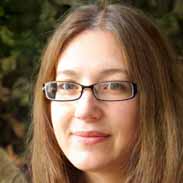chem test one – Flashcards
Unlock all answers in this set
Unlock answersquestion
| What is matter? |
answer
| Anything that occupies space and has a mass. |
question
| hypothesis |
answer
| “a tentative explanation of some regularity of nature.” |
question
| theory |
answer
| a tested explanation of basic natural phenomena.” |
question
| law |
answer
| An extensively tested theory…. |
question
| scientific method |
answer
| a method of investigation involving observation and theory to test scientific hypotheses |
question
| The Law of Conservation of Mass (or Matter) |
answer
| “the total mass remains constant during chemical change (chemical reactions).” |
question
| Antoine Lavoisier (1743 – 1794) |
answer
| Worked hard at establishing the prevalent way of thinking about chemistry. |
question
| substances |
answer
| Kinds of matter that cannot be separated into other kinds of matter by a physical process. |
question
| mixture |
answer
| Materials made of more than one substance. |
question
| element |
answer
| A substance that cannot be decomposed into a simpler substance by a chemical reaction. |
question
| compound |
answer
| A substance that can be decomposed to give one or more elements. |
question
| homogeneous mixture |
answer
| : A mixture that is uniform in composition throughout. |
question
| heterogeneous mixture |
answer
| A mixture that is not uniform in composition. |
question
| empirical |
answer
| “relying or based solely on experiments or experience; as, the empirical method.” |
question
| intuitive |
answer
| “knowing, learning, acting, or characterized by intuition.” |
question
| John Dalton (1766-1844) |
answer
| Elements are made of very small indivisible particles. Different atoms have different properties. Atoms are non-transmutable and indestructible. Compounds are formed by the combination of atoms. For a particular compound, the ratio of atoms of different types is constant from one molecule to another. Empirical in his approach. |
question
| Democritus (460-371 BC) |
answer
| All matter is made of indivisible particles called atoms. There is empty space between atoms Atoms are completely solid. Atoms are homogeneous with no internal structure. Atoms of different types are different in shape, size, and weight. |
question
| cathode ray tube |
answer
| The “ray” is made up of particles. Cathode rays are the same regardless of source. The ratio of charge to mass (q/m) is 1.76X1011C/kg Is q big or is m small? Thomson can only get q/m. |
question
| Robert Millikan (1868-1953) |
answer
| Univ. of Chicago and Cal Tech Worked on: Cosmic Rays Electron charge Photoelectric Effect Nobel Prize 1923 |
question
| The Big Experiment |
answer
| Put a charge on the oil drops. Use the charged plates to make drops stay in space. Calculate the charge on the oil drop. Finding:The charge on the drop is a multiple of a particular number (1q, 2q, 3q, …) q = 1.6X10-19C |
question
| Rutherford, Geiger, and Marsden |
answer
| a-particles emitted from a radio-active source are shot towards a thin metal foil. Some of the a-particles go through the foil and hit the screen in the back. |
question
| gold foil experiment means |
answer
| atoms have large empty space in them |
question
| James Chadwick |
answer
| Worked with Rutherford in the 1920s Discovered the neutron in 1932. Determined the structure of the Deuteron. |
question
| How does one element differ from another |
answer
| # of protons and electrons |
question
| Atoms of a particular element have the same number of electrons and protons. |
answer
question
| atomic # |
answer
| # of protons |
question
| mass # |
answer
| # of protons and neutrons |
question
| isotopes |
answer
| diff # of neutrons |
question
| Molecules |
answer
| collection of atoms joined by bonds |
question
| molecular compounds |
answer
| ONLY covalent bonds(sharing electrons) |
question
| ionic compounds |
answer
| comprised of ions...chem formula is called "formula unit" ex: NaCl |
question
| naming of simple ionic cpds |
answer
| cation(usually metal) & anion name metal followed by anion and make charge 0 ex: KNO3 Potassium Nitrate |
question
| covalent bonding & cpds naming (for non metals) |
answer
| name 2 elems in cpd noting # of each type of atom PCl3 phosphorus trichloride |
question
| metals w/ variable change |
answer
| denote cation charge with roman numerals elems with variable change are: Pb, Sn, Bi, Ga, In, Tl & trans metals FeCl2 Iron (II) chloride |
question
| hydrates |
answer
| molec or ionic cpds that have water associate with them Cr(NO3)3*9H2O = chromium (III) nitrate nanohydrate |
question
| ammonium |
answer
| NH4+ |
question
| Cyanide |
answer
| CN- |
question
| carbonate |
answer
| CO3 2- |
question
| hydrogen carbonate |
answer
| HCO3- |
question
| Acetate |
answer
| C2H3O2 - |
question
| Nitrite |
answer
| NO2- |
question
| nitrate |
answer
| NO3- |
question
| hydroxide |
answer
| OH- |
question
| peroxide |
answer
| O2 2- |
question
| Phosphate |
answer
| PO4 3- |
question
| sulfite |
answer
| SO3 2- |
question
| sulfate |
answer
| SO4 2- |
question
| hydrogen sulfate |
answer
| HSO4 - |
question
| Chlorate |
answer
| Cl03 - |



